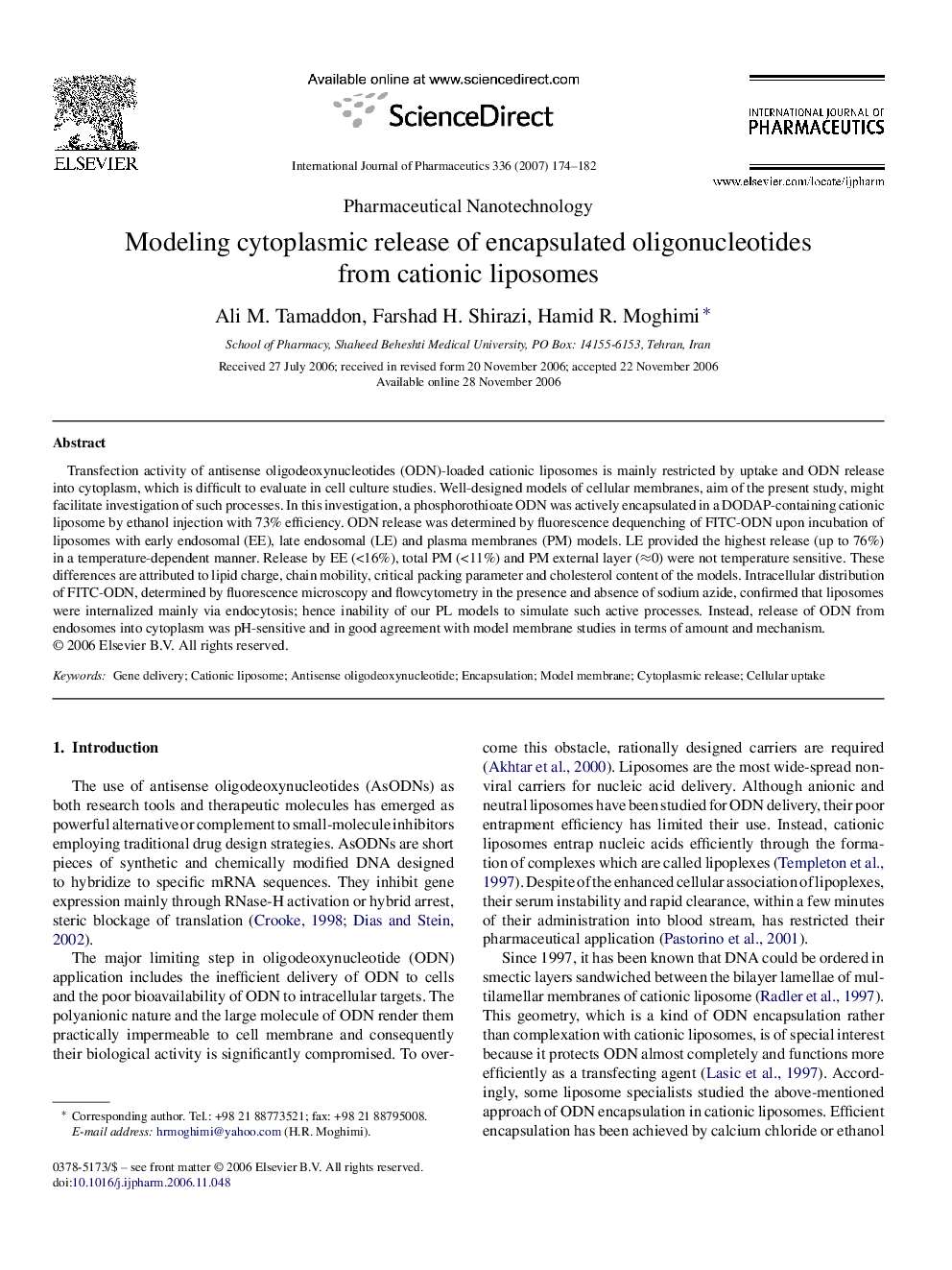| Article ID | Journal | Published Year | Pages | File Type |
|---|---|---|---|---|
| 2506239 | International Journal of Pharmaceutics | 2007 | 9 Pages |
Transfection activity of antisense oligodeoxynucleotides (ODN)-loaded cationic liposomes is mainly restricted by uptake and ODN release into cytoplasm, which is difficult to evaluate in cell culture studies. Well-designed models of cellular membranes, aim of the present study, might facilitate investigation of such processes. In this investigation, a phosphorothioate ODN was actively encapsulated in a DODAP-containing cationic liposome by ethanol injection with 73% efficiency. ODN release was determined by fluorescence dequenching of FITC-ODN upon incubation of liposomes with early endosomal (EE), late endosomal (LE) and plasma membranes (PM) models. LE provided the highest release (up to 76%) in a temperature-dependent manner. Release by EE (<16%), total PM (<11%) and PM external layer (≈0) were not temperature sensitive. These differences are attributed to lipid charge, chain mobility, critical packing parameter and cholesterol content of the models. Intracellular distribution of FITC-ODN, determined by fluorescence microscopy and flowcytometry in the presence and absence of sodium azide, confirmed that liposomes were internalized mainly via endocytosis; hence inability of our PL models to simulate such active processes. Instead, release of ODN from endosomes into cytoplasm was pH-sensitive and in good agreement with model membrane studies in terms of amount and mechanism.
